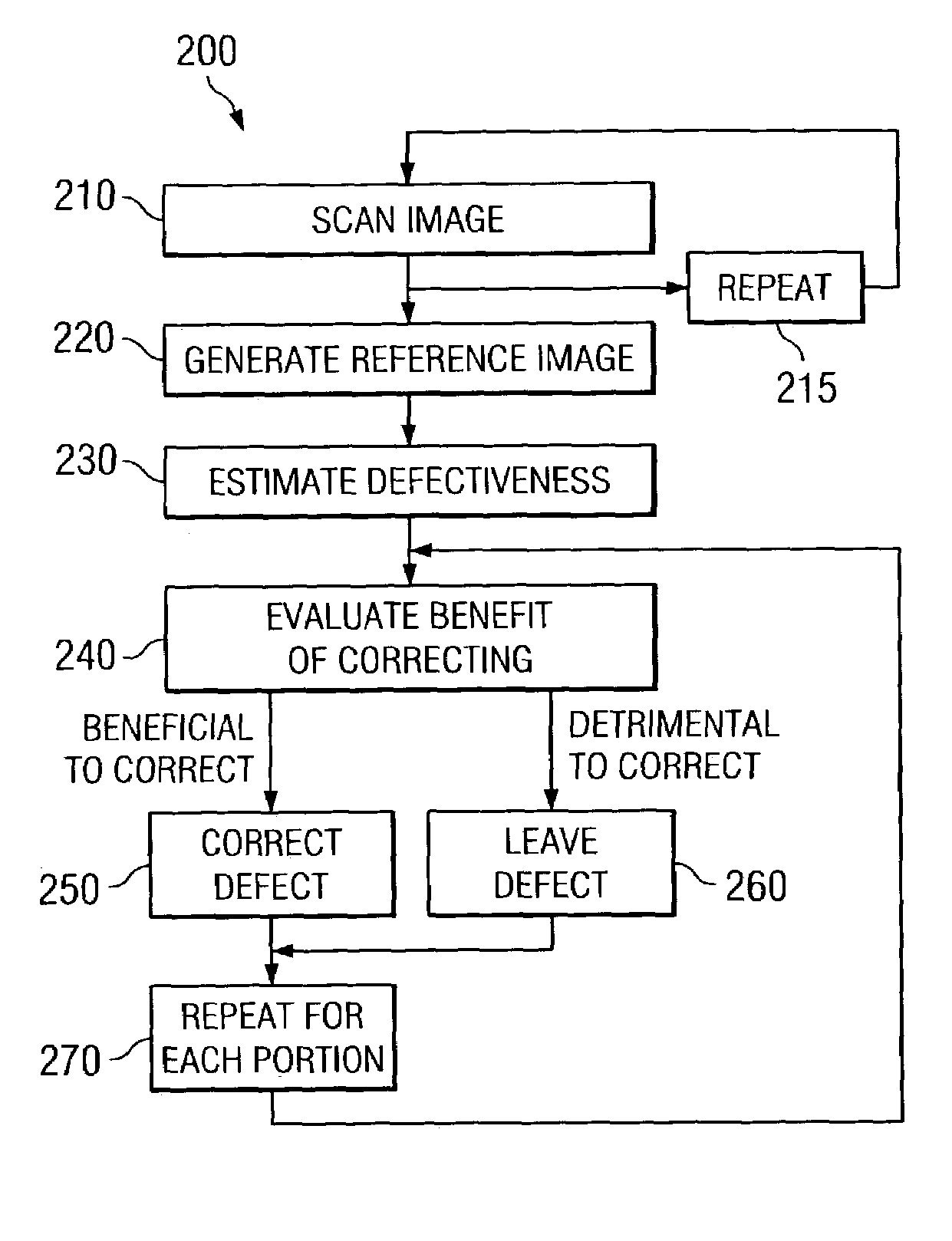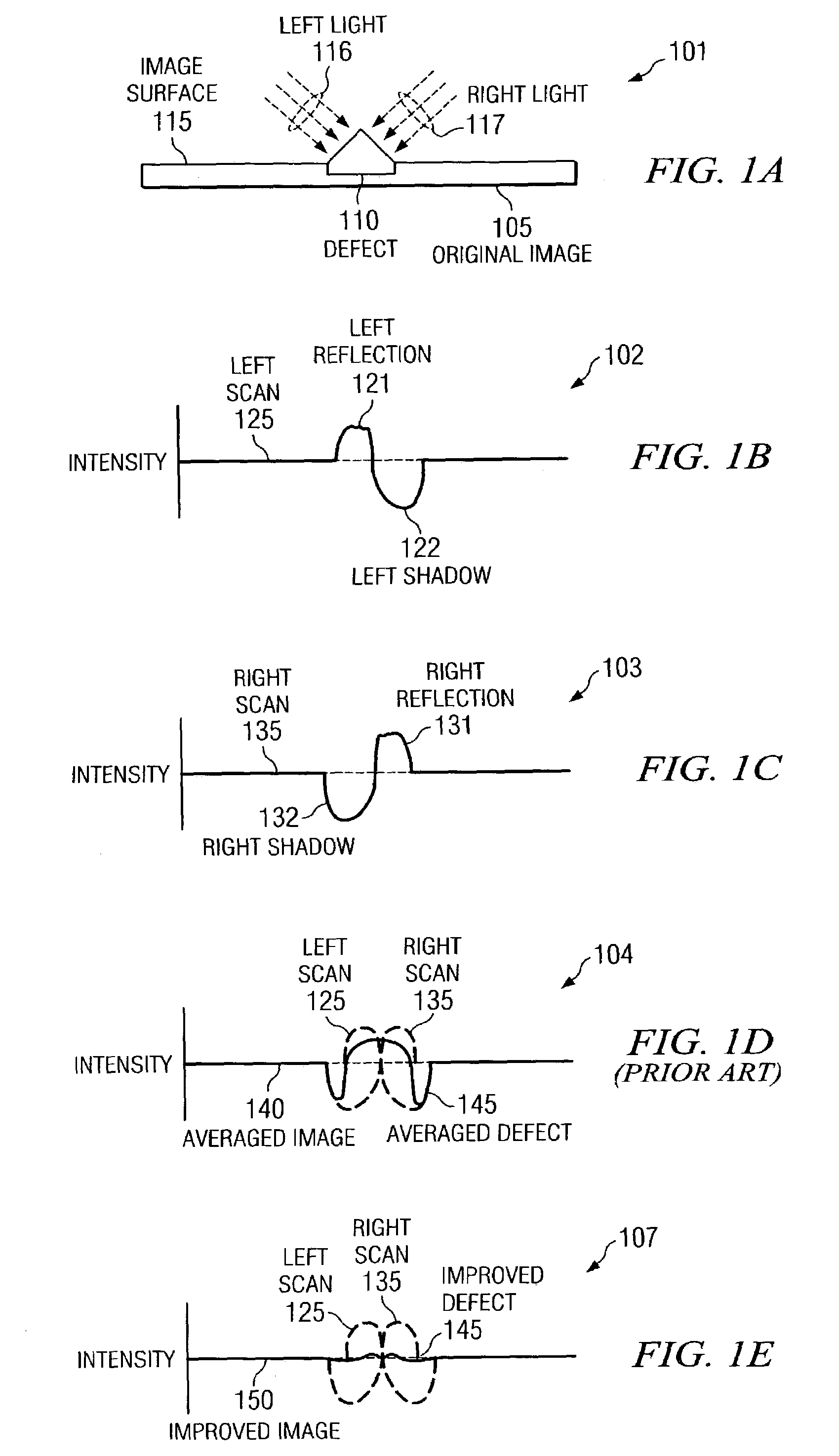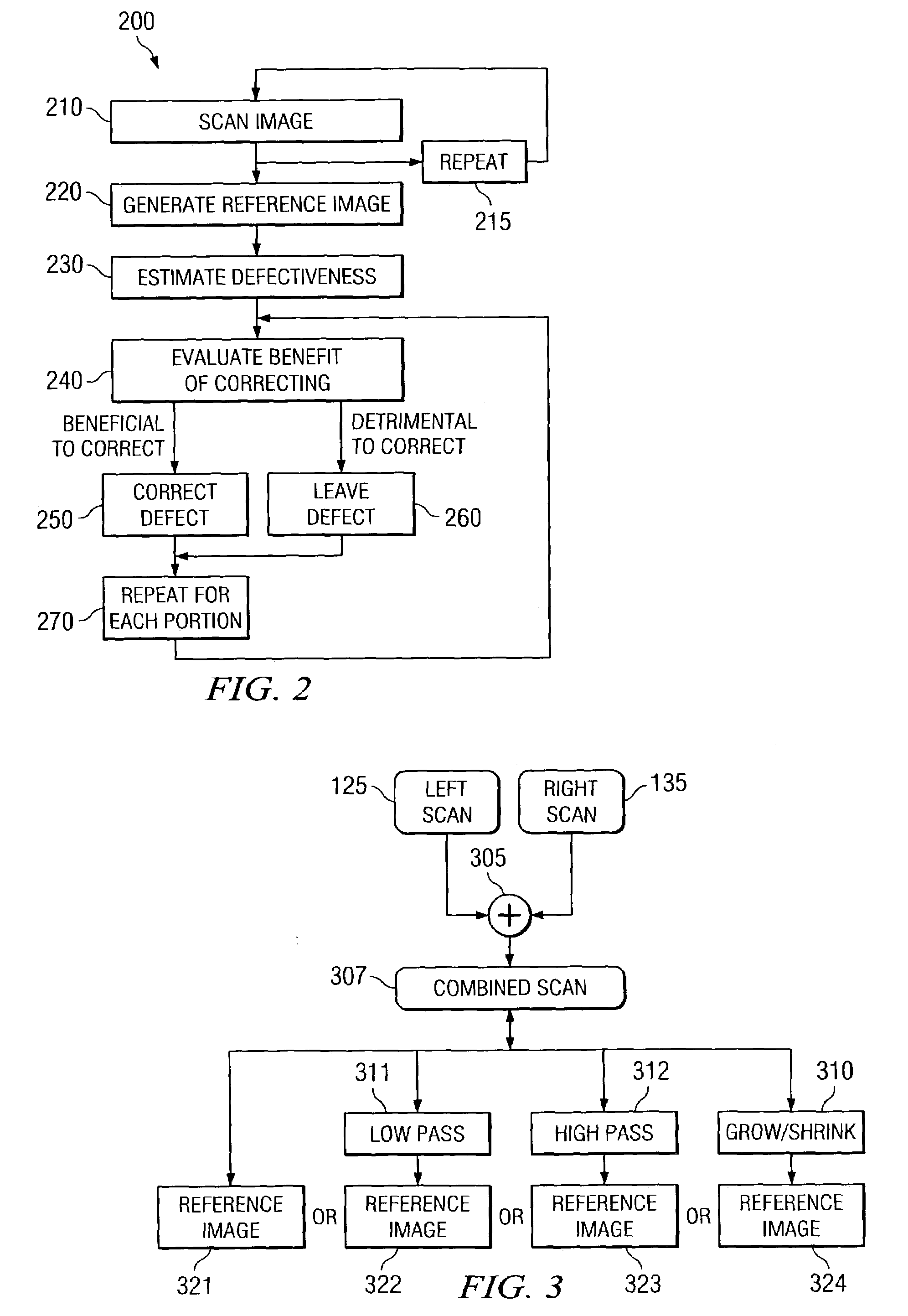Method, system and software for correcting image defects
a technology of image defects and correction methods, applied in the field of image processing, can solve the problems of reducing the potential for accurate capturing of images, affecting the reducing the visual appeal or image quality of recorded images, so as to achieve the effect of improving image quality, avoiding damage to reproduced images caused by improper correction defects, and improving image quality
- Summary
- Abstract
- Description
- Claims
- Application Information
AI Technical Summary
Benefits of technology
Problems solved by technology
Method used
Image
Examples
Embodiment Construction
[0020]FIGS. 1–10 illustrate a method, system and software for correcting defects formed in the physical medium of an original image. As described in greater detail below, the invention generally involves an improved technique for producing a corrected image. In particular, different methods for correcting defects often produces varying results that may even be worse than the defect itself. In one embodiment, the amount of defectiveness of a particular image region is determined. Defectiveness can be determined using a number of parameters, including a measure or estimate of the signal strength. A decision is made on whether or not the image portion having one or more defects should be corrected. In a particular embodiment, the decision is based on an evaluation of the potential benefit of correcting the defect compared to the potential damage caused by correcting the defect, which can vary by the particular defect correction method. In a particular, the potential benefit is proporti...
PUM
 Login to View More
Login to View More Abstract
Description
Claims
Application Information
 Login to View More
Login to View More - R&D
- Intellectual Property
- Life Sciences
- Materials
- Tech Scout
- Unparalleled Data Quality
- Higher Quality Content
- 60% Fewer Hallucinations
Browse by: Latest US Patents, China's latest patents, Technical Efficacy Thesaurus, Application Domain, Technology Topic, Popular Technical Reports.
© 2025 PatSnap. All rights reserved.Legal|Privacy policy|Modern Slavery Act Transparency Statement|Sitemap|About US| Contact US: help@patsnap.com



